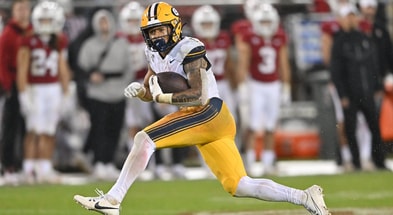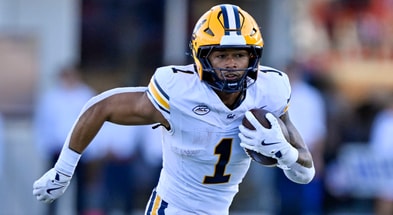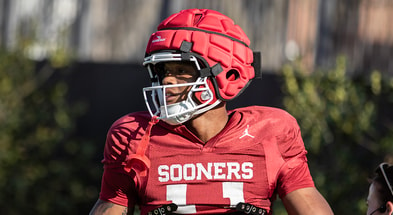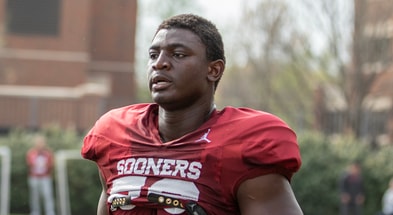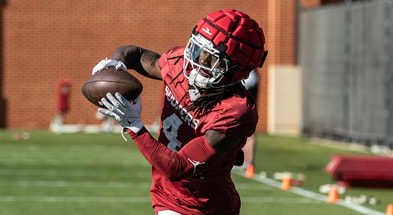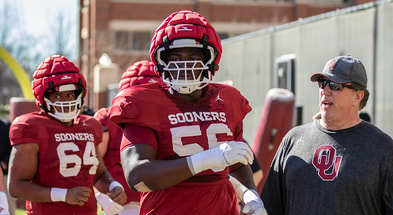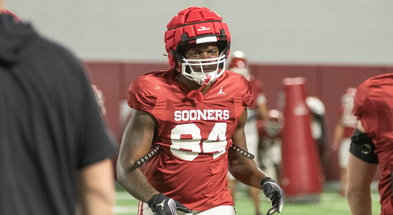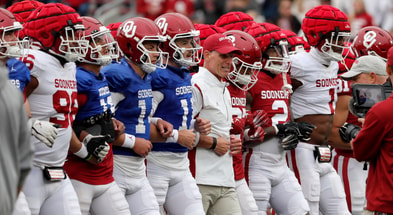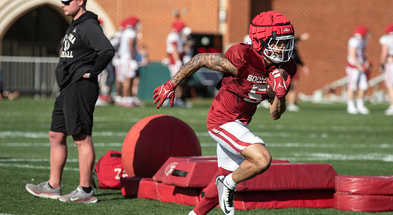OU celebrates move to the SEC with a goal of winning

Someday, Joe Castiglione is going to write a book about OU’s move to the SEC.
The secret meetings with Longhorns athletics director Chris Del Conte in the middle of nowhere Texas. The initial phone calls during the pandemic, and the conversations between he and SEC Commissioner Greg Sankey that led to Oklahoma entering the toughest conference collegiate athletics. But for Castiglione, Monday was not the day he was going to reveal those secrets. We will have to wait for his book release to know those.
“You want me to reveal my book?” Castiglione said joking when asked about the ins and outs of the move to the SEC. “Maybe someday.”
Monday, July 1, wasn’t about how OU joined the SEC. It was about why OU joined the SEC. It was a celebration for Castiglione, the athletic department and the SEC. Now welcoming one of the premier athletic departments in the NCAA.
“They have a clear expectation of excellence that I think complements our current members,” Sankey said. “The national championship achievements and the notion that a rising tide lifts all ships… You look at the achievements here, noting that those can be brought over. The fanbase was an important part… It’s the subjective analysis of, ‘Does the integration of that athletics program, that university, that fanbase fit seamlessly with our current 14 members?’ I think clearly it does, and so all of those elements are brought.
“If you look at facilities as you drive around, you see the softball stadium that’s been built. I think that sets a new standard in some ways. We have great facilities across our league. I’ve heard plans for other activities. I know Joe has been looking at our league facilities and wondering and imagining — Joe Castiglione, and then he has to go to Joe Harroz for that conversation… They bring an elevation of expectation and a new set of challenges. They bring a new community, and the people here have an opportunity to visit new communities.”
There was little to no new information revealed Monday during the celebration. It was more of an affirmation that this was the right move for the school.
Castiglione, along with OU President Joe Harroz, reminded everyone why they made the move, leaving the Big 12 after 28 years full of success. Harroz said it was for two reasons: competition and money.
“We did a study, deep dive into what is the future look like for college athletics,” Harroz said. “And for all the thinking that went into that, there were two conclusions that we reached that govern all of it. The first conclusion was the University of Oklahoma must be a place where we’re able to compete for championships on a regular basis in all of the sports, not make it into a final series, not make it into a playoff. But being in a position to win championships.
“The second of those critical criteria for us was we wanted to remain one of the handful of athletic departments in the country with universities that weren’t subsidized, that didn’t take money from the students or other sources to run. Being self-sufficient means a great deal to us.”
Top 10
- 1New
Lane Kiffin
Jabs Brian Kelly, Kirby Smart
- 2Hot
Potential landing spots
For Nico Iamaleava
- 3Trending
Mel Kiper
3-Round Mock Draft
- 4
Jaydn Ott
Top transfer RB signs with OU
- 5
Marcus Freeman
Reacts to Nico Iamaleava
Get the On3 Top 10 to your inbox every morning
By clicking "Subscribe to Newsletter", I agree to On3's Privacy Notice, Terms, and use of my personal information described therein.
Castiglione admitted they had considered conference realignment 10 years before they decided to leave in 2021. He tried his best to look into the future and predict what college athletics would look like. And he ultimately came to the conclusion it was best for Oklahoma to join the SEC where they will make over $60 million annually, which is almost $20 million more per year than they made in the Big 12.
“If anyone’s been paying attention, you know that the expenses in college athletics or around college athletics are going up much faster than the rate of new revenue,” Castiglione said. “We’re challenged every day — and have been, back to my first days here at Oklahoma. We have to find new ways to generate revenue… When we were looking at the world going forward, it wasn’t about where we were that day or where we might be two or three years from that point forward, it was where we were going to be in ’25, you know, when television contracts would change. Where were we going to be when people realized we’re gonna have to share some revenue with athletes? Where were we gonna be then? And where were we gonna be with more and more investment across a lot of other sports?
“Be it facilities, be it an investment in a program, handling rising costs. So to your point, that’s where we were trying to evaluate not just what was happening right then. But how was the world going to change and where Oklahoma was going to be.”
For OU, Monday was a long time coming.
Oklahoma’s leadership, from Castiglione to Harroz to all of the coaches, have been talking about the move for three years. And while all the details are still waiting to be shared in Castiglione’s book, those don’t matter anymore. Oklahoma is in the SEC — ready or not.
“We’re here,” Castiglione said. “There’s no more — ‘Hey Joe, what do you think about…Are you excited about…hey, when you get there…’ Fill in the blank. Many of you all have been asking me that for pretty much the last year… It is really, really exciting for all of us.
“The first dream we had would be being on a podium some day soon with commissioner Sankey handing one of our teams, if not many of our teams at some point, the Southeastern Conference Championship.”



